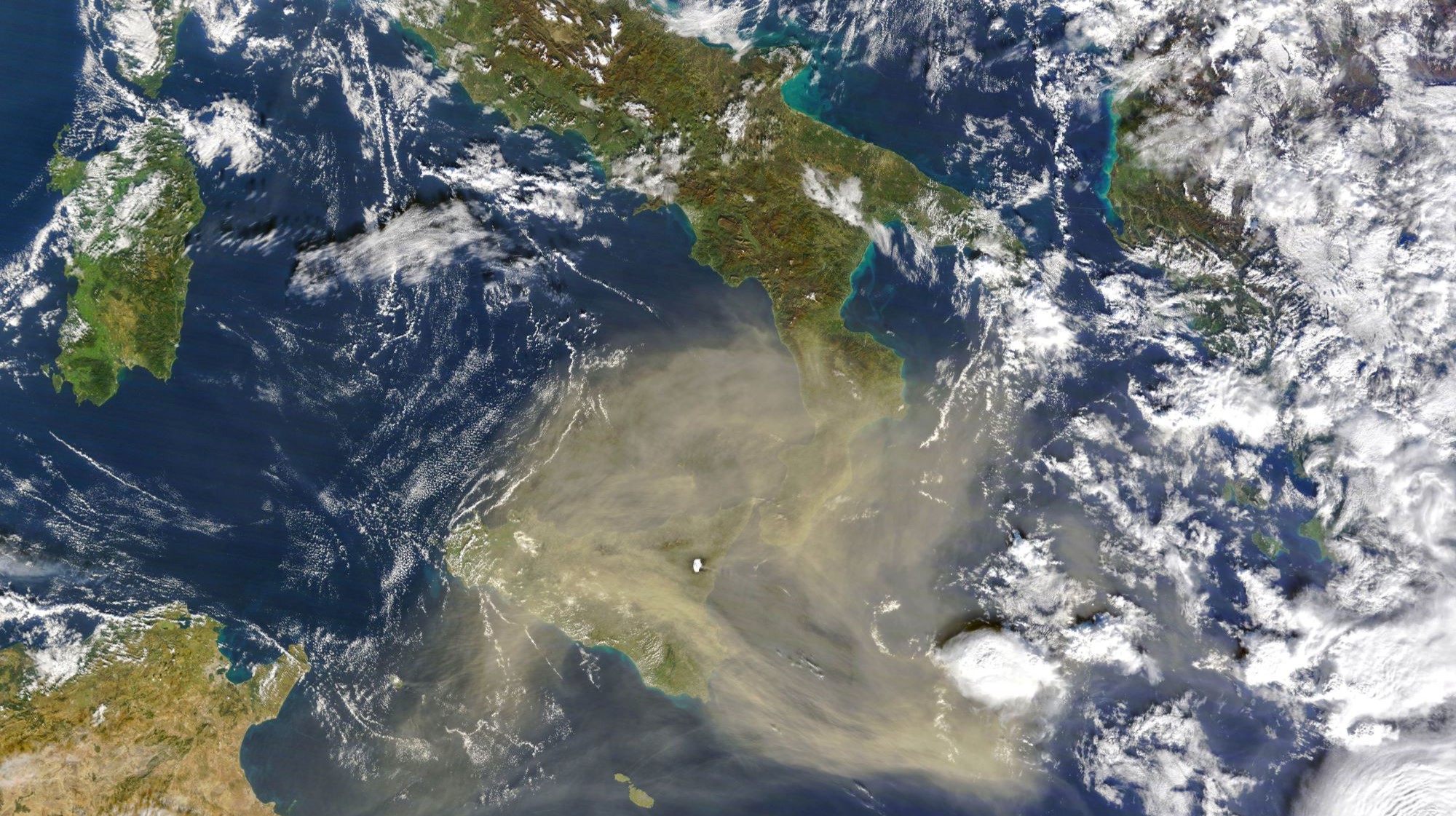

A dust particle can go on a great voyage. It starts on land; it continues in the air, where winds carry the particle up, up, and away. And—at least for some dust particles—that saga might end with a fall into seawater thousands of miles from where it began.
Dust intrinsically links Earth’s sands, skies, and seas. Particles that fall into water can deliver nutrients that feed life in the sea, creating great algal blooms. Scientists are learning more about the process, but there are many questions they still haven’t answered about how—and if—it works.
In a new study published today in the journal Science, scientists have answered one previous mystery. They’ve shown that more dust does, indeed, create more phytoplankton.
“Understanding how the ocean works is an underlying motivation,” says Toby Westberry, a botanist at Oregon State University, and the paper’s lead author. “It is vast and still poorly understood in many respects.”
Much of the world’s dust begins its journey in the world’s deserts. Winds blowing across the sands might carry some fine particles away. And the longer that sand sits in one place, the more dust that place generates: The world’s great dust generator lies in North Africa: the vast expanses of the Sahara.
From there, dust particles are passengers of the world’s wind patterns. For instance, North African dust might ride the westerlies to Europe, or it might ride the trade winds from North Africa across the Atlantic.
Inevitably, some dust falls into the world’s oceans along the way, unloading the cargo it carried from the deserts—elements like phosphorus and iron. The atmosphere is not inert, either, and adds new chemicals to airborne particles: As dust rides high through the skies of Earth’s troposphere, it collects nitrogen from the surrounding air. When dust delivers this nitrogen and other nutrients to the water, they encourage phytoplankton to bloom—tinting the oceans greenchanging the very color of the oceans.
Atmospheric dust isn’t the primary source of nutrients for sea plants; scientists think that they mainly rely on what rises as water upwells from the ocean depths. But dust can still make its mark—especially by delivering iron to parts of the ocean that are deficient in the metal.
Scientists pay close attention to dust particles because of their roles as iron couriers. “Often, when we think of dust,” says Douglas Hamilton, an earth scientist at North Carolina State University, who was not an author on the paper, “we do link it immediately to the iron.”
There are many questions that remain unanswered about this process. What precise role does the dust play in encouraging phytoplankton? Are there different types of dust that cause phytoplankton to respond in different ways?
Most pressingly, scientists didn’t know the process worked on a worldwide scale. Past research had shown that dust storms could cause local phytoplankton blooms; experiments had also demonstrated that literally pouring iron into seawater encouraged phytoplankton growth. “We’ve done this work, but does it actually matter?” says Hamilton. “We think it does…it’s been proved for isolated events, but it’s never been proved on the global scale.”
The paper’s authors tried to answer that question. NASA had simulated dust flows in the atmosphere between 2003 and 2016 based on observations of how surface temperatures changed with the days. Unsurprisingly, the simulations stated that more dust fell in regions around the Sahara Desert: in seas like the Mediterranean, the North Atlantic, and the Indian Ocean.
[Related: The Sahara used to be full of fish]
With that data in hand, the authors turned to satellite measurements of the seas over that same time period: specifically, observations of ocean color, which could indicate phytoplankton. Indeed, phytoplankton grew on the days after the simulation suggested certain parts of the sea would have received a windfall of dust.
The scientists saw such responses across the globe—but the blooms weren’t always equal. In some areas, increased dust led to a boost in the quantity of phytoplankton; in others, increased dust made the phytoplankton healthier, with brighter chlorophyll. In still others, dust didn’t seem to elicit a response at all.
“Why would this be?” Westberry wonders. “Knowing something about the mineralogy of the dust—what it’s composed of and what nutrients it carries—would be helpful to this end.”
Dust isn’t the only source of food airdropped to phytoplankton. Volcanic eruptions and wildfires both spew out nutrients that enter the ocean. “Volcanic ash is not the same as dust, but conveys nutrients much the same,” Westberry says. Meanwhile, scientists have linked megafires in Australia with phytoplankton in the downwind South Pacific. On the other side of the planet, wildfires in northern forests are associated with blooms around the North Pole.
[Related: In constant darkness, Arctic krill migrate by twilight and the Northern Lights]
“This paper is great, it’s awesome,” says Hamilton. “Then the next question is: Right, now, what about all this other stuff which is also out there? What impact is that having, too?” One future area of study is human activity, which causes climate change and wildfires. We may be responsible for desertification, too, creating more sand for winds to carry away. And our industrial activity—pollution and fossil fuels, for instance—pours out particulates of its own. Scientists think these substances might feed phytoplankton, but they don’t fully know how or if it works across the globe.
Fortunately for scientists, they may see a bloom of their own field. In 2024, NASA will launch a satellite called PACE specifically to observe phytoplankton in the ocean.
